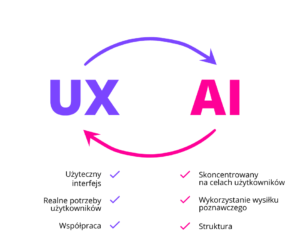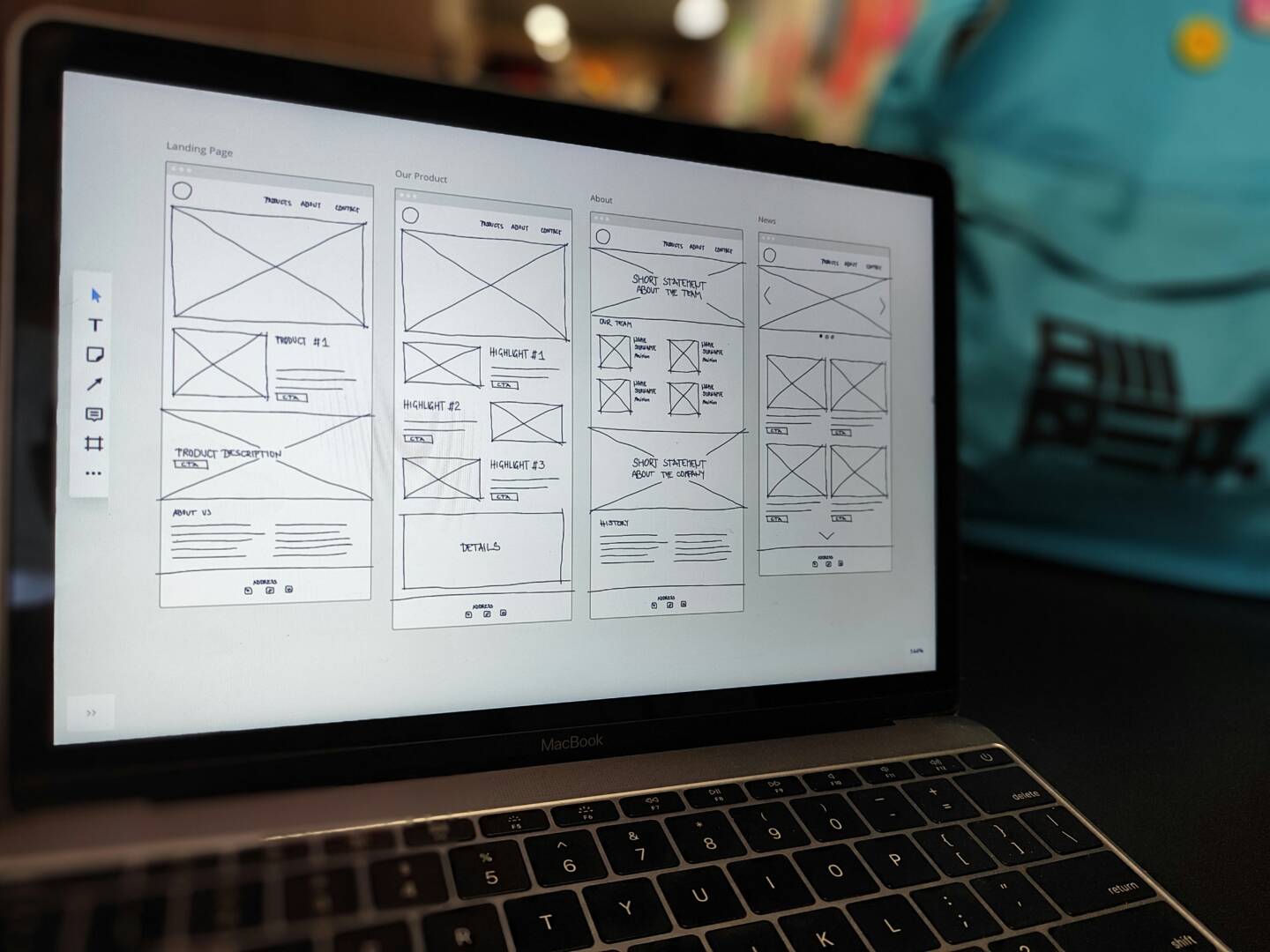
Czym jest architektura informacji?
Internet zawiera ogromną ilość informacji, które trudno byłoby zrozumieć bez odpowiedniego uporządkowania i przejrzystej struktury. Tutaj konieczna jest odpowiednia architektura informacji, która polega na organizowaniu, etykietowaniu i strukturyzowaniu treści w sposób ułatwiający ich odbiór i nawigację.
Jesteśmy przyzwyczajeni do oglądania treści i funkcjonalności produktów cyfrowych w sposób zorganizowany i łatwy w użyciu. Nie byłoby to jednak możliwe bez udziału projektantów UX i programistów. To oni odpowiadają za zbudowanie treści i nawigacji w sposób przyjazny dla użytkowników, korzystając właśnie z zasad architektury informacji.
Architektura informacji — z czym to się je?
W projektowaniu User Experience architektura informacji odpowiada za organizację i podział treści na stronie. Zdaniem ekspertów, architektura informacji to praktyka decydowania o tym, jak uporządkować części czegoś, aby było to zrozumiałe dla użytkownika.
Struktura treści zależy od wielu czynników. Przede wszystkim specjaliści biorą pod uwagę specyfikę potrzeb grupy docelowej, ponieważ architektura informacji stawia satysfakcję odbiorców na pierwszym miejscu. Zależy również od rodzaju produktu i oferty firm. Przykładowo: inaczej zostanie zaprojektowana struktura sklepu internetowego, a inaczej struktura bloga.
W 1998 roku Peter Morville i Louis Rosenfeld napisali książkę „Architektura informacji dla sieci World Wide Web” i chociaż autorzy nie spodziewali się dużego sukcesu, książka stała się w tym roku najlepszą książką internetową Amazona. Więc co to pokazało? Istotność projektowania odpowiedniej architektury informacji. Bez niej sieć pogrążyłaby się w chaosie.
Czy architektura informacji jest tym samym co UX?
Nie. Istnieje między nimi silny związek, ale chociaż UX obejmuje wiele elementów architektury informacji, nie są one dokładnie tym samym.
UX jest znacznie szerszy i obejmuje kilka aspektów doświadczenia użytkownika, których architektura informacji nigdy nie dotyka – takich jak upewnienie się, że interfejs odpowiada na pewne psychologiczne potrzeby użytkownika. W przeciwieństwie do tego architektura informacji jest znacznie bardziej skoncentrowana na celach użytkownika i wykorzystaniu wysiłku poznawczego.

Oto, w jaki sposób te dwie koncepcje są ściśle powiązane: bez dobrej architektury informacji nie ma logicznego i efektywnego doświadczenia użytkownika.
AI powinna być podstawą, na której można budować doświadczenia użytkowników. Stanowi szkielet każdego projektu.
Sens zastosowania architektury informacji
Wiele firm nie dostrzega znaczenia architektury informacji, ponieważ uważają, że jest niepraktyczna.
Trudno zaprzeczyć, że tworzenie architektury informacji zajmuje trochę czasu i wymaga określonych umiejętności, aby zrobić to skutecznie. Jednak jest gwarancją wysokiej jakości produktu, ponieważ zmniejsza możliwość wystąpienia problemów z użytecznością i nawigacją.
W ten sposób przemyślana architektura informacji może zaoszczędzić firmie zarówno czas, jak i pieniądze, które w przeciwnym razie poświęciłyby na naprawę i ulepszenia.
Wartość dla użytkowników
Według Petera Morville’a i Louisa Rosenfelda architektura informacji witryny musi odpowiadać różnym potrzebom użytkowników.
Wyróżniają 4 główne typy potrzeb, takie jak:
- Wyszukiwanie znanych przedmiotów: użytkownicy będą odwiedzać witrynę w poszukiwaniu czegoś pożądanego i znanego.
- Poszukiwanie eksploracyjne: Użytkownicy będą przychodzić na stronę w poszukiwaniu inspiracji. Szukają czegoś pożądanego, ale nie wiedzą, co dokładnie.
- Wyczerpujące badania: użytkownicy są w trakcie szeroko zakrojonych badań. Chcą znaleźć jak najwięcej informacji.
- Ponowne wyszukiwanie: użytkownik ponownie potrzebuje żądanych przedmiotów i próbuje je znaleźć.
Myśląc o architekturze informacji, ważne jest, aby pomyśleć o różnych użytkownikach oraz o tym, jak będą nawigować, wyszukiwać lub używać filtrów.
Przykład: witryna e-commerce. Jeśli szukasz nowych butów na ślub, możesz filtrować według stylu i koloru. Ale jeśli szukasz prezentu, możesz zobaczyć kilka wyselekcjonowanych pomysłów na prezent. Jeśli wiesz dokładnie, czego chcesz, chcesz mieć możliwość szybkiego znalezienia tego bez przeglądania.
Dobra architektura informacji ma duży wpływ na wrażenia użytkownika. Im szybciej użytkownicy dotrą do miejsca docelowego, nawet jeśli miejsce to zawiera wiele opcji, tym większa będzie ich satysfakcja. Dlatego nigdy nie powinniśmy zapominać, że poznanie użytkowników i ich zachowań związanych z poszukiwaniem informacji jest kluczem do sukcesu. Gdy znamy potrzeby naszych użytkowników, możemy ustalić priorytety, które elementy architektoniczne należy zbudować.
Wartość dla biznesu
Jeżeli klienci nie są w stanie znaleźć odpowiednich informacji lub wykonać określonych zadań, firmy mogą wiele stracić. Architektura informacji odgrywa rolę w następujących przypadkach:
- Wydajność pracowników — zła architektura informacji wewnętrzna może przyczynić się do zmniejszenia wydajnoci pracowników, ze względu na ilość czasu, którą pracownicy poświęcają na znalezienie informacji, których potrzebują, a nie mogą ich znaleźć,
- Sprzedaż — to jedna z oczywistych konsekwencji złej AI. Jeśli klienci nie znajdą odpowiednich produktów, sprzedaż spanie. Efekty mogą mieć długotrwały skutek, ponieważ klienci mogą znaleźć konkurenta, który bez problemu rozwiąże ich problem i zaspokoi ich potrzeby.
- Pozyskiwanie nowych członków — w zależności od modelu biznesowego, pozyskiwanie użytkowników np. aplikacji może być kluczowym celem. Dlatego strony rejestracyjne, powinny być zaprojektowane z wykorzystaniem badań UX.
- Obniżenie kosztów marketingu — jeśli użytkownicy opuszczają Twoją stronę, bo nie mogą odnaleźć informacji, których poszukują, wydasz znacznie większą kwotę na remarketing, aby ich przywrócić. Koszty marketingu wzrosną, aby uzyskać ten sam efekt.
- SEO — architektura informacji ma również spory wpływ na pozycjonowanie strony. Ranking stawia stronę wyżej w wynikach wyszukiwania jeśli dane i treści witryny są odpowiednio uporządkowane.
Testowanie architektury informacji
Istnieje kilka sposobów testowania, które pozwalają ocenić, czy architektura informacji została zaprojektowana w sposób skuteczny i intuicyjny dla użytkowników. Tego rodzaju metody umożliwiają zrozumienie, jak odbiorcy postrzegają strukturę treści, czy potrafią łatwo odnaleźć potrzebne informacje oraz, czy przyporządkowują je zgodnie z założeniami projektanta.
Card sorting
Podczas sesji sortowania kart uczestnicy organizują tematy w kategorie, które mają dla nich sens, a także mogą pomóc w oznaczeniu tych grup. Sortowanie kart pomaga zrozumieć oczekiwania użytkowników i zrozumienie tematów. Card sorting jest zazwyczaj uzupełniane przez tree testing w celu weryfikacji zidentyfikowanych kategorii.
Tree testing
Testowanie drzewa to metoda badania UX, która pozwala ocenić hierarchię tematów w witrynie lub aplikacji. W tree testing uczestnicy otrzymują tylko tekstową wersję hierarchii witryny i są proszeni o wykonanie serii zadań. Ostateczny cel sprowadza się do odpowiedzi na pytanie„Czy użytkownicy mogą znaleźć to, czego szukają?”.
Linki opisujące architekturę informacji
- Tworzenie architektury informacji na stronie – dynomapper.com
- Proces architektury informacji: jak stworzyć najlepszy UX – bluefountainmedia.com
- Kompletny przewodnik po architekturze informacji – webdesignerdepot.com
- Poprawa architektury informacji: przewodnik dla początkujących sortowania kart – smashingmagazine.com
- Testy nawigacji IA – nngroup.com
- Strona inżynierii interfejsu użytkownika – uie.com
- Osiem zasad IA autorstwa Dana Browna – asis.org
- Wysoki koszt nieodnalezienia informacji – utoronto.ca
- IA vs nawigacja – nngroup.com
- Zrozumieć architekturę informacji – prezi.com
Książki o architekturze informacji
- Zrozumienie kontekstu: środowisko, język i architektura informacji autorstwa Andrew Hintona
- Jak zrozumieć każdy bałagan: Architektura informacji dla wszystkich autorstwa Abby Covert
- Praktyczny przewodnik po architekturze informacji autorstwa Donny Spencer
- Projektowanie nawigacji internetowej: optymalizacja doświadczenia użytkownika James Kalbach
- Architektura informacji dla sieci WWW: dla sieci i nie tylko Louis Rosenfeld i Peter Morville
Podsumowanie
Warto pamiętać, że nawet po zakończeniu pracy struktura witryny będzie zawsze ewoluować i zmieniać się w zależności od potrzeb użytkowników. Architektura informacji powinna zatem być nieodłącznym elementem całego procesu projektowania UX.
Jako stale rozwijająca się praktyka, projektowanie IA jest w równym stopniu sztuką, co umiejętnością, co po części jest powodem, dla którego duże korporacje zajmują stanowiska architektów informacji.
- Architektura informacji — z czym to się je?
- Czy architektura informacji jest tym samym co UX?
- Sens zastosowania architektury informacji
- Wartość dla użytkowników
- Wartość dla biznesu
- Testowanie architektury informacji
- Card sorting
- Tree testing
- Linki opisujące architekturę informacji
- Książki o architekturze informacji
- Podsumowanie















